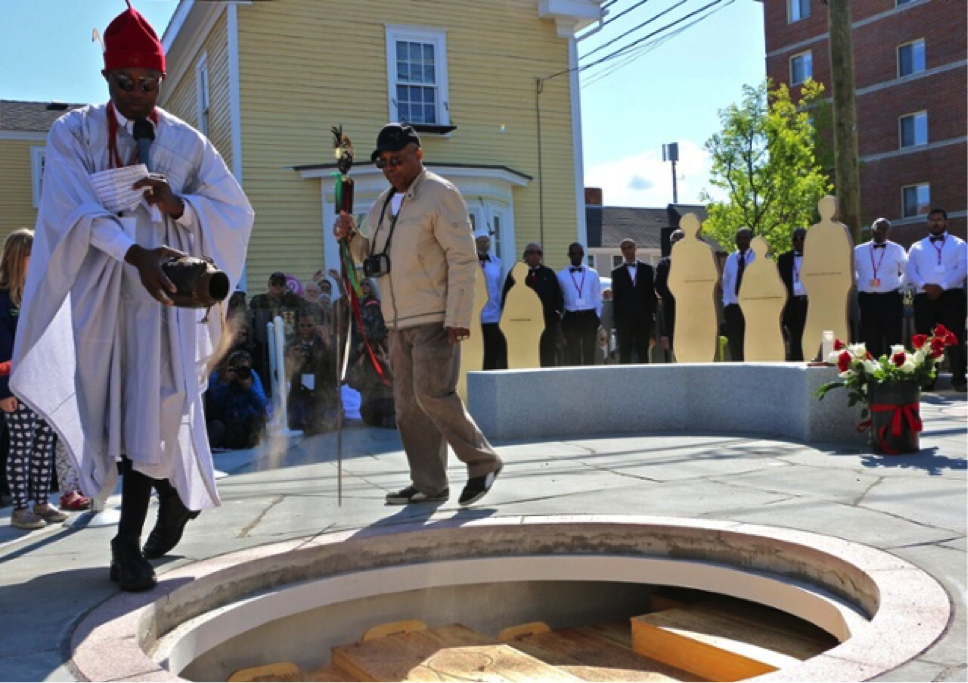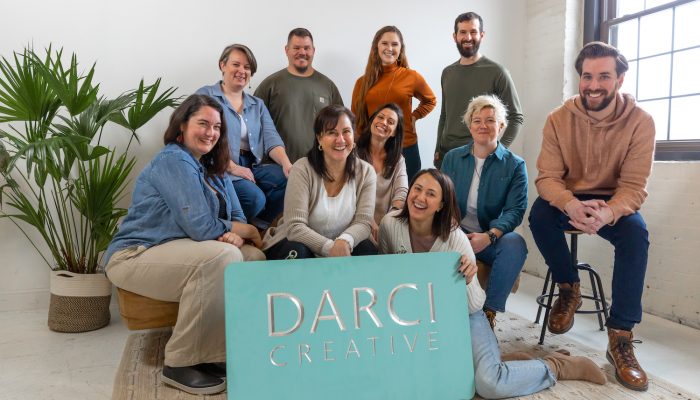The city of Portsmouth is known for its rich history. Settled in 1623, it’s the nation’s third oldest city and home to the quaint Strawbery Banke Musuem, John Paul Jones’ ship The Ranger, and the country’s first Naval shipyard. (True, the Portsmouth Naval Shipyard is stationed just across the Piscataqua River in Maine, but close counts.)
A rather new edition to our remarkable city is the African Burying Ground Memorial Park – a tribute to the enslaved men and women who were buried and forgotten under Portsmouth soil. We’ve learned quite a bit about the Burying Ground and its history, as we are fortunate enough to share our office space with the historic site right on Chestnut Street. Let’s take a look at how the African Burying Ground came to be, to where it now stands today.
The roots of slavery in New Hampshire trace back as early as the 1600’s when African men and women were brought overseas to Portsmouth’s booming seaport. The “Negro Burying Ground” (as it was known then) was actively used throughout the 1700’s, back when Chestnut Street was among one of the underdeveloped areas on the outskirts of town. As we know, the city has expanded since then; during the growth of the 1700 and 1800’s, the burial ground was paved over and built upon, wiping the memory of those laying beneath.
It wasn’t until 2003 that the site was rediscovered when city workers contributing to a sewage project began digging beneath Chestnut Street. What did these workers find? To their surprise, the wooden coffins and remains of thirteen people long forgotten. Admittedly a little creepy, but the discovery was certainly enough to strike up a conversation about what to do with the site going forward.
And the rest is, well, history. After long discussion among the Portsmouth community, it was decided upon that a symbolic park would stand as memorial to those lives that were carelessly neglected and forgotten. And at the heart of its design is the artistic touch of Jerome Meadows, a sculptor and artist from Georgia. Meadows captured the park’s theme in the statement “We Stand in Honor of Those Forgotten.” One of the more striking features is a sculpture at the entrance of the park: two bronze figures separated by a slab of granite, standing back to back. One of the figures, a woman, represents Mother Africa, extending her arm towards an African slave. They are not quite touching, representing the separation brought on by slavery and today’s efforts to reconcile that distance.
A winding path of engraved granite leads to the opposite end of the park where eight gold statues stand atop the underground burial vault. Across their figures reads a poem, written by Meadows:
“I stand for the Ancestors Here and Beyond
I stand for those who feel anger
I stand for those who were treated unjustly
I stand for those who were taken from their loved ones
I stand for those who suffered the middle passage
I stand for those who survived upon these shores
I stand for those who pay homage to this ground
I stand for those who find dignity in these bones.”
The remains discovered in 2003 were reburied during a grand ceremony in May of 2015 (among the 200 other forgotten slaves). Built with the support of community donations and federal grants, the $1.5 million project was led by Piscataqua Landscaping & Tree Service. From start to finish, we can attest that they did a beautiful job – we did have front row seats, after all.
We are honored to share our sense of place with the community and those who have gone before us. The completion of the Portsmouth African Burying Ground Memorial Park represents all that is good and true about our town, and that makes us proud every time we step out our front door.
Have you seen the completed African Burying Memorial? Stop by Chestnut Street to take in this historic site, and while you’re at it, stop in DARCI Creative for some marketing chat!













